The science of electromagnetism underpins practical applications in industry as well as household conveniences. Without electromagnetism, we wouldn’t be able to generate or transport electricity. Admittedly, that's a broad topic so, in this article, we focus only on electromagnetic induction. Electromagnetic induction happens when a changing magnetic field induces an electromotive force (EMF) or voltage in a conductor.
What Is Electromagnetic Induction?
- Electromagnetism represents an overlap of electricity and magnetism.
- Electromagnetic induction is the production of electromotive force (EMF) through the presence of a changing magnetic field.
- Electromagnetism was discovered - not invented; it's the force that holds together the different parts of the atom.
- Two fundamental principles (laws) define electromagnetic induction activity: Faraday's Law and Lenz's Law.

A Brief History of Electromagnetic Induction
To best explain the process and importance of electromagnetic induction, we start just past the discoveries of Andre-Marie Ampere and Hans Christian Oersted. Their lightning bolt insights into electromagnetism led to William Sturgeon inventing the horseshoe electromagnet.
Michael Faraday is the next big name. He discovered the principles of electromagnetic induction when he conducted experiments, the results of which he published in 1831.
Michael Faraday
Faraday took an iron ring and wrapped two pieces of wire into coils around opposite sides of it. He expected to see some sort of electrical charge or effect on the second piece of wire once he energised the wires.
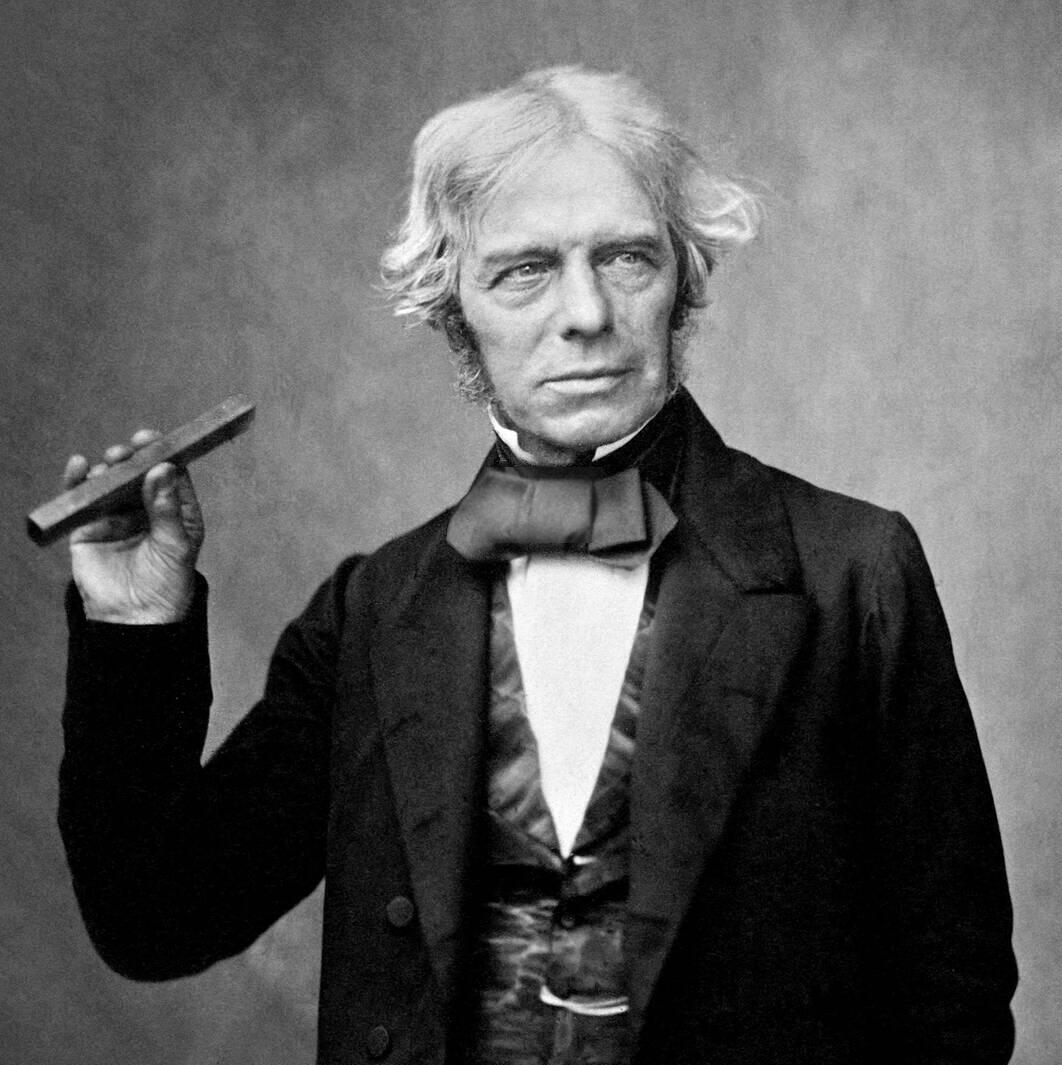
He connected the second wire to a galvanometer, a machine that measures electrical charges. When he turned the battery on and off on the first wire, the galvanometer showed an electrical charge. This, Faraday suggested, was due to the magnetic flux that passed through the centre of the ring.
Faraday ascertained electric current manifested when the magnetic field changed. Otherwise, no current flow was detected.
In another experiment, he slipped a bar magnet in and out of a coil of wire. The movement provoked the same electrical charge.
What Did James Clerk Maxwell Contribute?
Faraday did the practical work, but his results weren’t met with much enthusiasm, as he didn’t present his findings in mathematical terms.
Thirty years after Faraday's groundbreaking experiments, this Scottish mathematician and physicist began exploring ways to give Faraday's results a mathematical representation.
He drafted equations to represent the laws for various physical phenomena, including ones that describe what happens in electromagnetic induction.
Specifically, the four Maxwell's Equations describe Gauss' Law, Gauss' Law for Magnetism, Faraday's Law, and Ampère-Maxwell law.
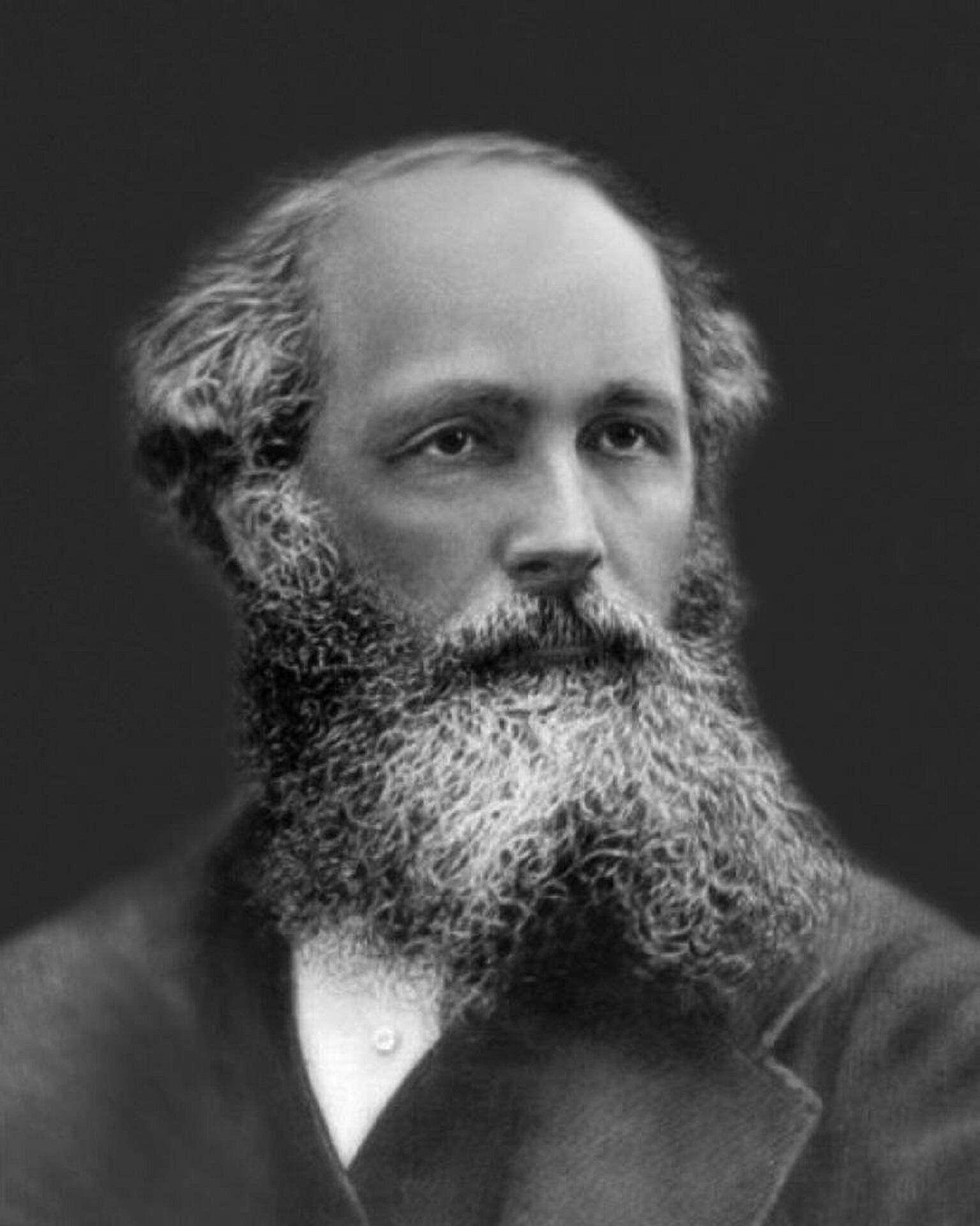
Thanks to this mathematical representation, Faraday's Law found acceptance. Today, students master and apply them during their physics courses. Now, let's examine these laws, their equations, and what they mean.
What Is Electromagnetic Induction: Fundamental Principles
Everything in the known universe operates on a set of fundamental principles, some of which are unique to the 'thing' in question.
We are fortunate to have great minds that discovered some of these principles; by no means is the journey of discovery complete. Still, think of Albert Einstein and Isaac Newton, and others of their ilk. Where electromagnetic induction is concerned, two great minds applied themselves to establish these guiding principles4.
Faraday's Law of Induction
Any change in the magnetic environment of a coil of wire will cause a voltage (EMF) to be "induced" in the coil.
Faraday's Law
Picture a magnet, perhaps one attached to your fridge door or a part of a play set. It behaves just as it should, repelling same-charge poles and attracting opposite charges. Its strength neither wanes nor grows over time. For the most part, it cannot be used in functions greater than its innate abilities.
That's why we call them permanent magnets. Faraday's Law starts from that premise, and expands magnets' capability by inducing a change. Such a change might be moving a magnet closer and further away, changing the coil's magnetic strength (adding turns), or moving / rotating the coil within the magnetic field.
Lenz's Law, Explained
When an EMF is generated by a change in magnetic flux according to Faraday's Law, the polarity of the induced emf is such that it produces a current whose magnetic field opposes the change which produces it.
Lenz's Law
Physicist Heinrich Lenz built on Faraday's Law by asserting that the induced magnetic field will always keep the loop's magnetic flux constant. For instance, if the magnetic field increases, the induced field opposes it. The opposite is likewise true: as the magnetic field decreases, the induced field increases.
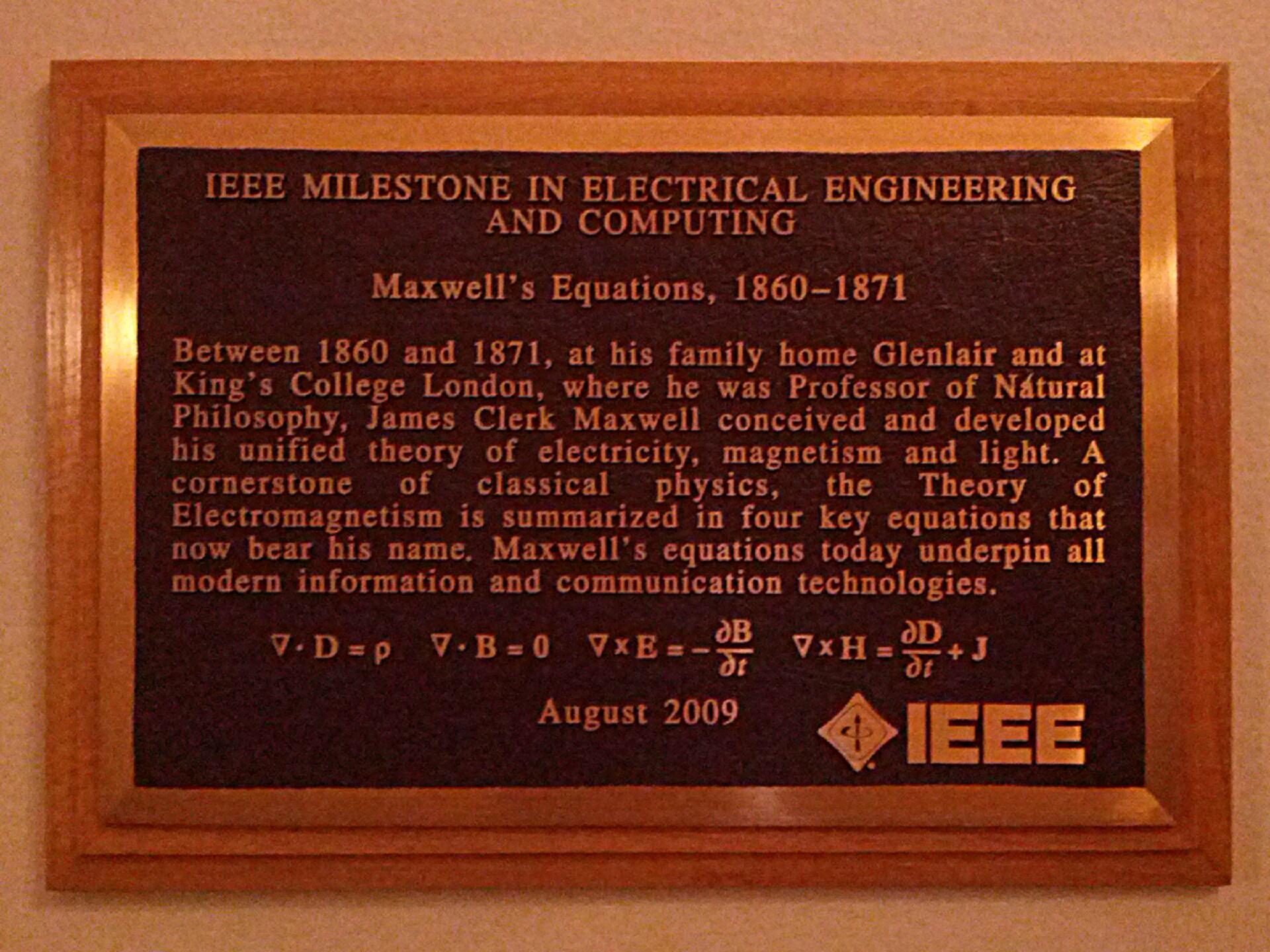
Expressing These Laws Mathematically
Wordsmiths like me love words; they're our stock in trade. However, words have little currency in scientific circles, as they're open to interpretation and offer little proof of their fact. Mathematical representation, on the other hand, is verifiable and falsifiable (open to empirical testing).
E = -N × dΦB/dt
Where E = the induced EMF
N = the number of coil turns
ΦB = the magnetic flux through one loop
d = a derivative
t = time
With the symbols explained and calculation steps defined by mathematical procedure, every physicist could arrive at the same conclusions as Michael Faraday. The 'negative' symbol (-) before N represents Lenz's Law.

Mechanisms of Electromagnetic Induction
As noted above, electromagnetism represents the blending of forces of electricity and magnetism. Here, we learn how they work together before delving into electromagnetic induction principles.
How Magnetism Works
First, a very short recap of what we know about magnetism. Some materials have magnetic force and others do not. Iron and nickel are magnetic but plastic and cloth are not. We compare magnetic and non-magnetic materials' properties side-by-side:
Magnetic materials
- unpaired electrons are all aligned.
- they exert a force in a particular direction.
Nonmagnetic materials
- all electrons are paired OR
- electron alignment is random.
We call magnetic materials permanent magnets or ferromagnetic materials. Ferromagnetic materials are either spontaneously magnetic, or they're magnetic because they came into contact with a magnetic field.
Magnets have many useful applications (and quite a few fun ones!). However, their power is limited and cannot be controlled. That's where electromagnets come in.
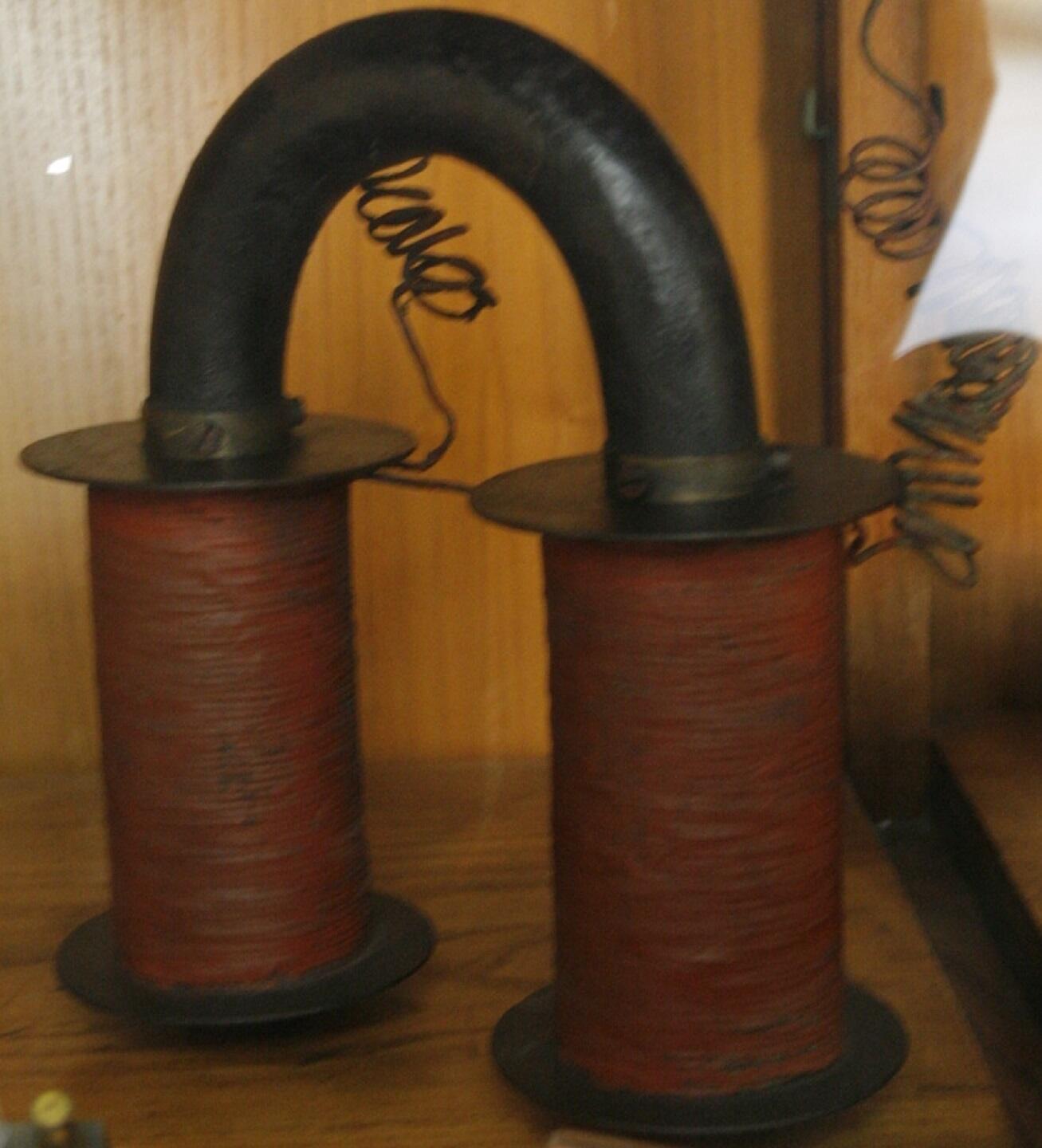
And Electromagnets?
An electromagnet is a magnet powered by an electric current. Electricity itself has a magnetic force, and science has found ways of making that force much stronger.
Electromagnets use coils of wire, with each coil winding around a piece of metal – usually iron. As electric current flows through this wire, it produces a magnetic field centred on the magnetic core1.
Electromagnets are super strong, and they're controllable. As soon as you turn off the electricity, it stops being magnetised. These magnets produce electricity, making them very useful across a wide range of applications.
One of electromagnets' most important applications is in electromagnetic induction.
A Moving Conductor in a Magnetic Field
Now, our fundamental understanding of basic magnetism and electromagnetism is refreshed. We can move on to more topic-specific matters, such as what happens when a conductor moves in a magnetic field.
Moving a conductor in a magnetic field induces EMF. The conductor's motion causes a change in magnetic flux; the resulting EMF is proportional to the rate of this change2. If the conductor is part of a closed circuit, the induced current's direction obeys Lenz's law (see above).
This principle is fundamental to the operation of electric generators and motors, where mechanical motion is converted into electrical energy.
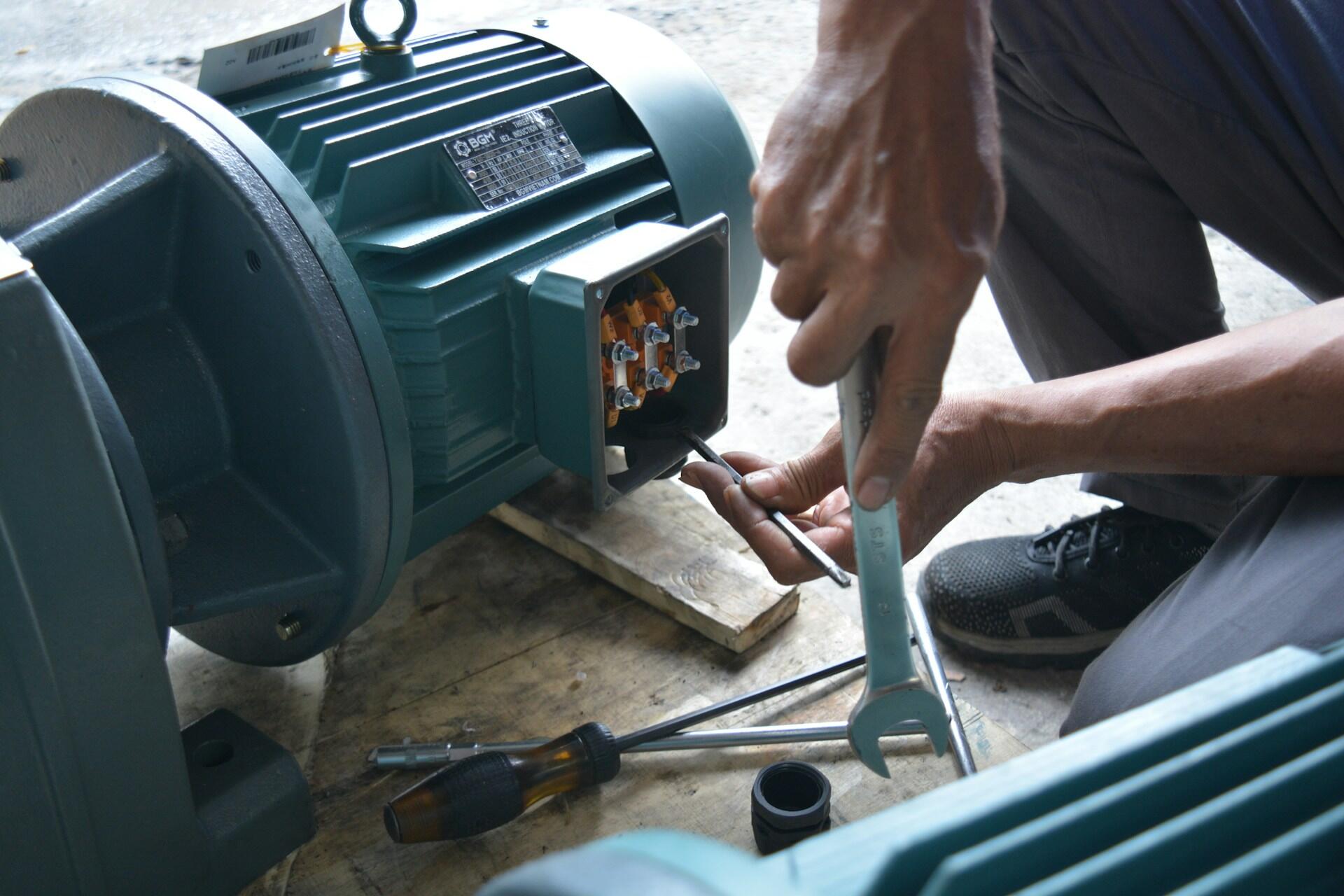
Changing the Magnetic Field Around a Conductor
A change in the magnetic field generates a circulating electric field, as described by Faraday's law of induction (see above).
The negative rate of change of magnetic flux Faraday's Law describes the induced voltage.
In fact, changing the magnetic field around a conductor, or moving a conductor in a magnetic field yields the same result.3 You can ask any Superprof Physics tutors Melbourne; they'll explain things the same way.
Induced Current Examples: How Do We Use Electromagnetic Induction?
Lots of major technologies apply electromagnetic induction. It's a fair bet you have some in your home! We'll leave off all the industrialised applications in favour of spotlighting ones you surely know.

Electrical Generators
Electrical generators work by producing a magnetic field in which other magnetised coils are moved.
Internal combustion engine cars have alternating current generators (alternator) to ensure that the battery remains charged. With alternating current, the induced current moves in alternating directions, hence the name.
DC (direct current) generators have a mechanism that reverses the movements in the magnetic field so there is no alternation.
Induction Stove: How It Works
Induction hobs are the biggest thing in household appliances these days. They're safe and economical to use, and come with a very low price tag. Using one allows you to replicate Faraday's original experiment.
- Switching the device on introduces voltage to its coils.
- placing cookware with a ferromagnetic base (stainless steel or iron) changes the device's magnetic field.
- The changing magnetic field induces a current in the cookware's metal base (called eddy currents).
- Eddy currents encounter resistance within the metal, which causes it to heat up.
- The generated heat is contained within the cookware, making the process highly efficient.
As your cookware's base heats up, it transfers that heat to your food. This process explains eddy currents and applications you might be familiar with if you have such a hob.

Transformers
As power stations generate electricity, it's not suitable for household use. It's in the order of thousands of volts so that, as it's transported across long distances, the voltage drop becomes insignificant. To make this electrical supply safe for household use, this power is 'stepped down' - first in substations, and then in neighbourhood transformers.
Two electromagnetic coils:
The first coil has many turns; it accepts the incoming high voltage and meters it.
The second coil has fewer turns, accepting the metered voltage from the first coil.
The second coil further reduces the voltage, sends it to homes.
You don't need to learn all about transformers to know how useful they are. However, these relatively simple devices give you an everyday example of electromagnetic induction in action.
Electromagnetic Induction: Further Reading and Resources
- Encyclopaedia Britannica: https://www.britannica.com/science/electromagnet
- Studypug: https://www.studypug.com/physics-help/induced-emf-in-a-moving-conductor
- Electronics Tutorials: https://www.electronics-tutorials.ws/electromagnetism/electromagnetic-induction.html
- Dr Carl Rod Nave: http://hyperphysics.phy-astr.gsu.edu/hbase/electric/farlaw.html















